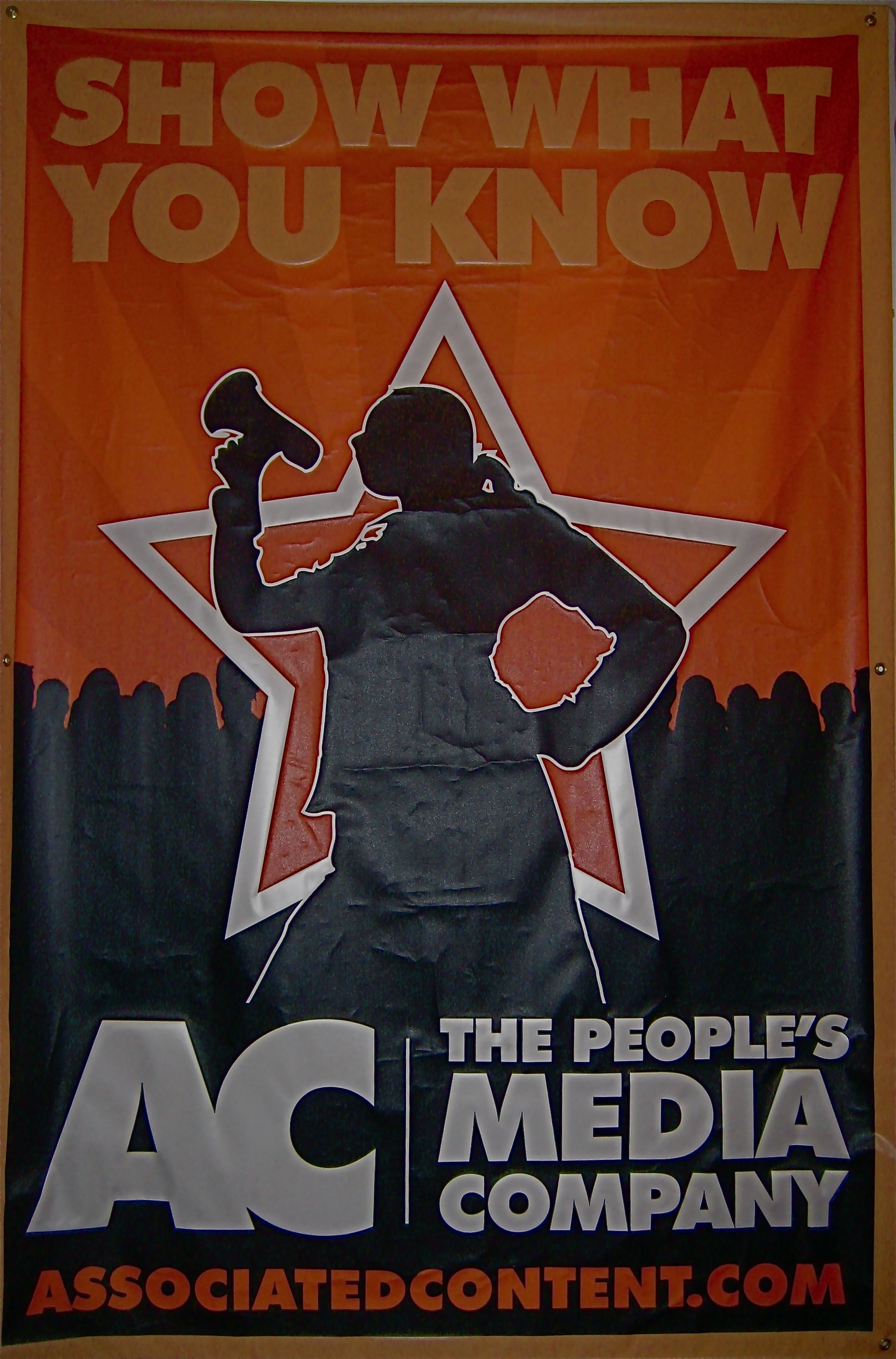'Quality Scores' For Web Content: How Numbers Will Create A 'Beautiful Cycle of Greatness for Us All'

Patrick Keane spent four years at Google, before becoming chief marketing officer at CBS Interactive (which owns CNet and ZDNet).
Now he’s in his third month as chief executive officer at Associated Content, the “people’s media” company.
And the former head of advertising sales strategy at the world’s dominant search service is ready to apply the numeric ranking techniques of Sergey Brin and Larry Page’s digital steamroller to the stuff that has long been regarded as the most intangible of products: quality content.
Writers, authors, video producers and the like may cringe at the idea that every piece of work they do will be graded on a 1 to 10 or 1 to 100 scale, kind of like a taste score by Robert Parker or The Wine Spectator, for a fermented grape beverage.
But it’s coming and Keane wants his outfit to be the one that cracks the code. Literally.
Keane is at work on figuring out what will constitute a Quality Score, for every article, podcast, Webcast or other piece of output generated by an Associated Content contributor. If his 21st Century content production and distribution network can figure out how to put a useful rank on what it puts out on the Web then it can raise it up, notch by notch.
This scoring comes right back to the Page Rank process that is at the heart of Google’s success as a search engine.
“The great thing about Page Rank in Google ‘ s algorithm is … seeing the Web as a big popularity contest,’’ said Keane, in Associated Content’s offices on Ninth Avenue in Manhattan.
The idea, of course, is this: The more sites that link to a particular piece of content, the more votes there are that this piece of content is useful. That is to say, that the content is good. That it has higher quality than other pieces of content of similar sort on the Web.
So the Quality Score that is in the conceptual stage at Associated Content will attempt to provide a similar benchmark that not just the popularity of a piece of content, but its usefulness. In the Associated Content world, usefulness is a key component of quality.
Says Keane:
“The reality of the Web is: Quality needs a redefinition and retooling in my opinion.
Quality is a subjective term. Does quality equal Tom Friedman and Paul Krugman writing for the New York Times with Princeton and Columbia-trained brains and all the journalism chops you could ever have? They create a certain valuable content that a certain user gravitates toward.
But, there could be a guy blogging in his underpants in Chicago about video games, that might not be a professionally trained journalist and may not be the world’s best writer, but if someone is looking for cheat codes, is looking for information and is looking for strategic tools and advice on how to play games and that guy is creating great content, is that quality? Is that useful for the user?
I think quality needs to veer a little more closely to useful as opposed to Pulitzer-Peabody winning kind of professionalism. I think there is a place for both.’’
But getting to a valid scoring of quality will not be easy. Keane does not believe in the thumbs up-thumbs down bifurcation that has worked for Siskel and Ebert and other movie reviewers. He also doesn’t believe in the one-star to five-star ratings that Yelp and other restaurant review sites use. Too often, it’s impossible to tell whether one consumer got great service from an inspired waitress (five stars) and another couldn’t tell that the “spider” in his sushi roll was really a fried crab claw.
What Associated Content intends to do, in coming up with its method for scoring content the way other publishers score wine, is to pull in and weight ratings from as many sources as possible. Some will be human. Some will be purely mathematical.
The humans will be:
Contributors. Writers of the content. Folks who know what the content is about and can evaluate its nuances (if they’re experienced). Folks who also can evaluate the pixels on the page and how well the content is presented. Content managers. These are folks who spend their entire days evaluating content, prioritizing it, putting it page and trying to coax more life and traffic out of it.
Users. The folks who actually digest the stuff and know how satisfying, how useful or how intellectually stimulating it is.
What the new metric for users will be, Keane does not know. But it won’t involve thumbs or stars. “I’d like to see if maybe there is some code we can crack on user contribution to quality evaluation,’’ he says.
Then there is:
The math. Associated Content will create its own algorithm or algorithms that use semantic analysis, tracking of the density of key words in an article, evaluation of where content is on a landing page, what traffic it pulls, how consistently it pulls traffic and the like to determine the worthiness – the quality – of a piece of content.
“This is not an inconsequential task. It’s going to take some real development, engineering, thinking and all of the other juicy things that go into it,’’ says Keane. And, that task will take a constant combination and recalculation of the views of users (aka, “community” members), editors, and contributors, as well as impersonal and unjudgmental math to deliver a score.
Associated Content is just getting started. But if it can figure out how to deliver a defendable Quality Score, then the business of providing content on the Web changes radically.
AC can charge advertisers a premium for having their messages appear next to or inside content that ranks 7 or above on a scale of 10. Similarly, it can charge news organizations more to subscribe to a feed of its content, whether its health information or financial affairs commentary, based on its standardized rank in quality.
At that point, it will be in AC’s interest, contributors’ interests and editors’ interest to make sure the ranking keeps going up. Better quality will then be demonstrably more profitable.
“I hope the community polices itself, realizes the value in having better quality and editing their content in a more sophisiicated way and it rises all boats,’’ Keane said.
If, he says, “the community is creating better content, we have better content available, we can monetize that content more effectively, we can syndicate it more, and it grows traffic. It’s sort of this beautiful cycle of greatness for us all. That’s what I hope.”
Let’s hope he’s right. And content authors and producers, long trained to listen to their hearts and intellectual urges, can learn instead to use numbers – to use grades – as motivational tools for everything they do. Or produce.
